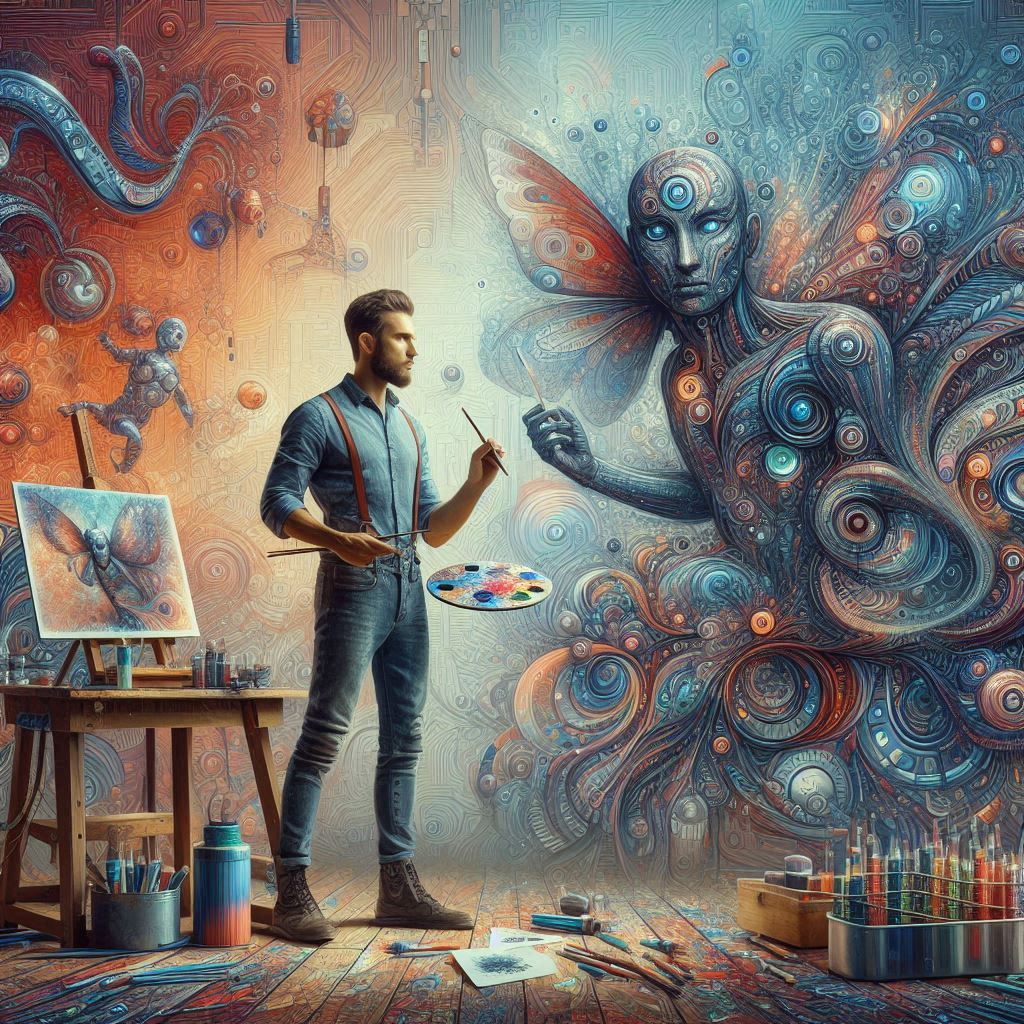The future of AI in the arts is not adversarial but collaborative, where human creativity and AI capabilities intertwine. Creativity is not solely human but part of a broader spectrum that embraces robotic and algorithmic innovation.

The between human creators and AI is complex yet promising. Artists increasingly see AI as a powerful tool that enhances creativity, much like traditional art methods. However, concerns about plagiarism and data ownership arise as artists fear unauthorized use of their work by AI systems. Initiatives such as Holly Herndon and Mat Dryhurst’s Spawning AI seek to safeguard artists’ rights in this evolving landscape.
AI’s role in the arts, exemplified by Ai-Da, a humanoid robot artist, challenges notions of creativity and authorship. By producing art from datasets and visual inputs, Ai-Da creates unique works that provoke thought on traditional authorship. Cognitive scientist Margaret Boden links creativity to novelty, value, and surprise, suggesting that AI art meets these criteria. Historical shifts in art, like those initiated by Marcel Duchamp, show how AI art disrupts traditional norms. Scholar Marcus du Sautoy sees AI as a catalyst for human creativity, providing fresh perspectives. The narrative concludes by affirming a harmonious future for AI in the arts, recognizing creativity as inclusive of both human and machine contributions.


